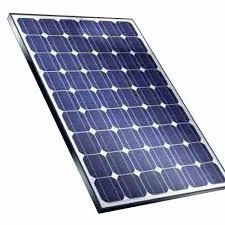pv panel bifacial
The Increasing Popularity of Bifacial PV Panels in Solar Energy
In recent years, the demand for sustainable and renewable energy sources has skyrocketed, and solar energy stands out as a frontrunner in this transition. Among the innovations in solar technology, bifacial photovoltaic (PV) panels have gained significant attention due to their efficiency and versatility. This article explores the workings, benefits, and future of bifacial PV panels in the solar energy landscape.
Understanding Bifacial PV Panels
Bifacial PV panels are distinct from traditional photovoltaic panels in that they can capture sunlight on both sides. This dual-sided design allows them to harness direct sunlight as well as reflected sunlight from the ground or surrounding surfaces. Typically made of transparent materials such as glass, the panels are engineered to maximize the amount of sunlight they can absorb. This design inherently increases their energy output compared to conventional monofacial panels.
Advantages of Bifacial PV Panels
1. Higher Energy Yield One of the primary advantages of bifacial panels is their enhanced energy yield. Studies have shown that bifacial panels can generate 10% to 20% more electricity than monofacial panels under optimal conditions. This improvement is largely attributable to the reflection of sunlight from the ground, especially when installed in areas with light-colored or reflective surfaces such as snow or sand.
2. Reduced Land Use As bifacial panels produce more energy from the same footprint, they can lessen the land required for solar farms. This is particularly significant in regions where land availability is a concern or where competition for land use is high. With rising urbanization and population, maximizing energy production from limited space is crucial.
3. Durability and Longevity Bifacial panels are typically built with more durable materials than their monofacial counterparts. Their robust construction not only protects them against harsh weather conditions but also extends their operational lifespan. This durability translates into lower maintenance costs and fewer replacements, making them a more economical choice in the long term.
pv panel bifacial

4. Aesthetic Appeal The sleek and modern design of bifacial panels often makes them more visually appealing for residential installations. As homeowners and businesses become more conscious of aesthetics in addition to functionality, bifacial panels provide an attractive solution that can blend seamlessly with various architectural styles.
Economic Considerations
While bifacial PV panels generally offer a higher return on investment due to increased efficiency, the initial costs can be higher than traditional panels. However, ongoing advancements in manufacturing technologies and economies of scale are likely to drive these costs down over time. Additionally, as governments and organizations prioritize renewable energy, subsidies and incentives for solar energy projects can further offset the initial investments.
Future Prospects
The future of bifacial PV panels looks promising. As technology continues to evolve, the efficiency and performance of these panels are expected to improve even further. Emerging innovations, such as building-integrated photovoltaics (BIPV) and advances in tracking systems, could increase the overall solar energy yield even more. Additionally, ongoing research into materials and manufacturing processes may lead to reduced costs, making bifacial PV panels accessible to a broader market.
With growing environmental awareness and the urgent need to combat climate change, the transition towards renewable energy sources is more critical than ever. Bifacial PV panels represent a significant leap forward in solar technology, offering higher efficiency, reduced land use, and long-term savings. As both individuals and businesses continue to seek sustainable energy solutions, bifacial technology is likely to play a pivotal role in shaping the future of the solar industry.
Conclusion
In conclusion, the increasing adoption of bifacial photovoltaic panels reflects a broader trend toward smarter and more efficient energy solutions. With their ability to yield significantly more energy from the same installation, their durability, and their potential to harmonize with modern aesthetics, bifacial PV panels are set to become a vital component of the global push towards sustainable energy. As technology advances and costs decrease, we can expect to see an even greater integration of bifacial solar solutions in both commercial and residential settings, paving the way for a brighter and more sustainable energy future.
-
Unlocking Energy Freedom with the Off Grid Solar InverterNewsJun.06,2025
-
Unlock More Solar Power with a High-Efficiency Bifacial Solar PanelNewsJun.06,2025
-
Power Your Future with High-Efficiency Monocrystalline Solar PanelsNewsJun.06,2025
-
Next-Gen Solar Power Starts with Micro Solar InvertersNewsJun.06,2025
-
Harnessing Peak Efficiency with the On Grid Solar InverterNewsJun.06,2025
-
Discover Unmatched Efficiency with the Latest String Solar InverterNewsJun.06,2025







